IB Biology: Muscle Structure, Contraction, and Movement Adaptations
1/90
There's no tags or description
Looks like no tags are added yet.
Name | Mastery | Learn | Test | Matching | Spaced |
|---|
No study sessions yet.
91 Terms
Mobility
The ability of an organism to locomote and move from one location to another.
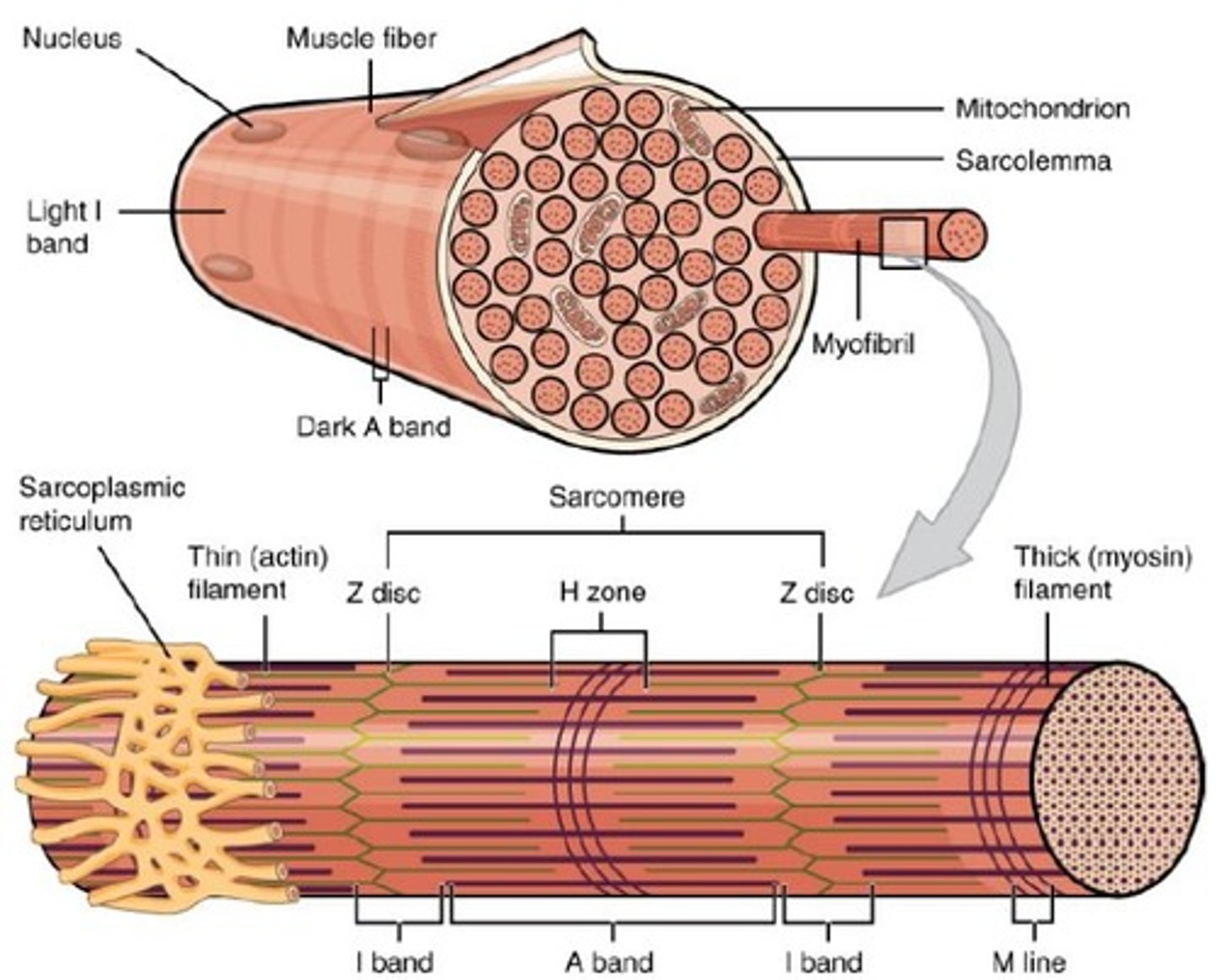
Motility
A characteristic of all organisms whereby they independently move using metabolic energy.
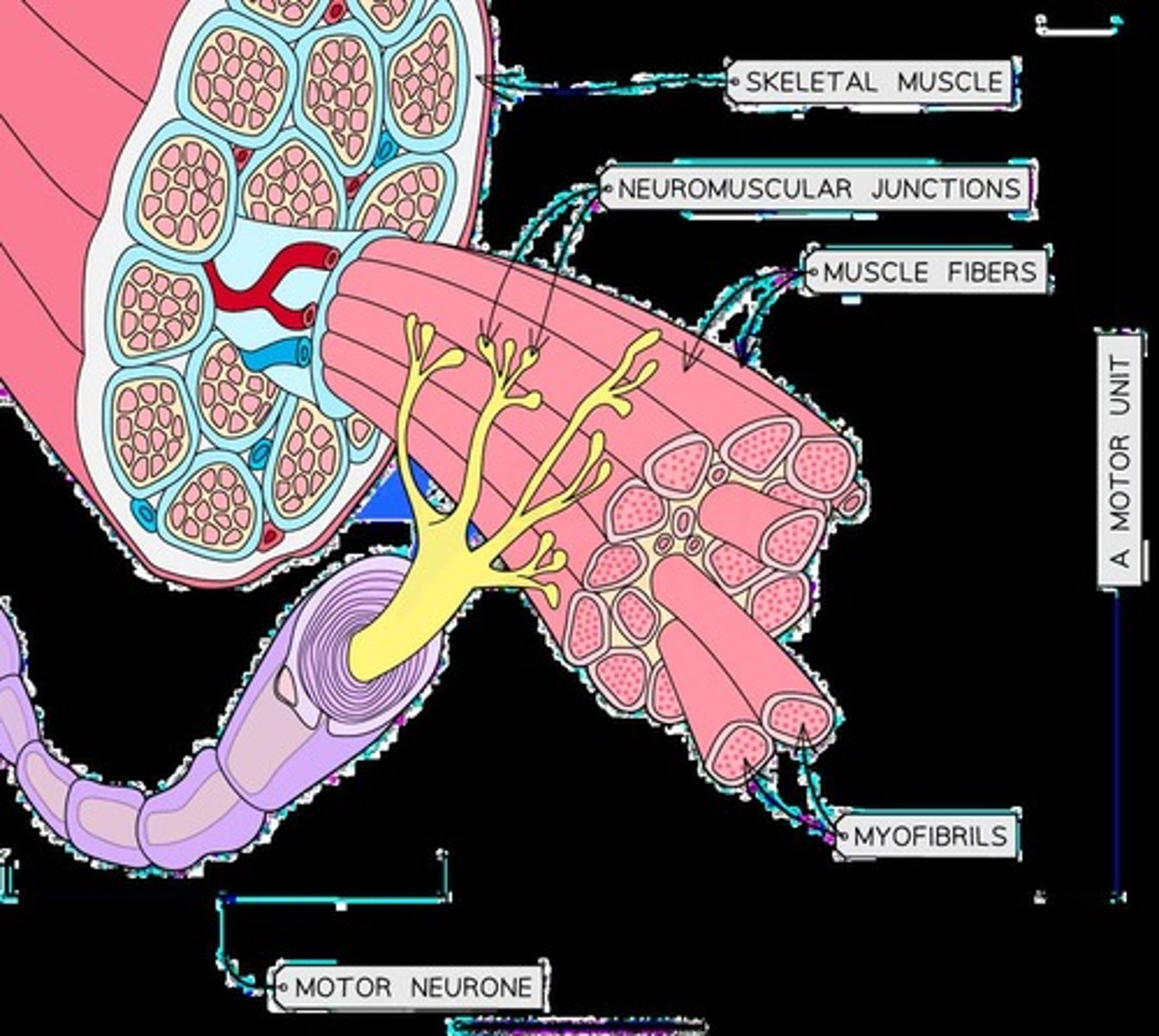
Sessility
A trait by which an organism is fixed in its location and unable to move.
Streamlining
Marine animals are shaped to minimize water resistance by reducing drag and friction through smooth + hairless skin and tapering towards the rear.
Adapted limbs
Marine limbs form flippers to allow for steering, and their fluked tails with up-and-down movement provides increased thrust.
Airways in marine mammals
The mouth and lungs are not connected (like in humans), and the blowhole enables them to breathe.
Motor unit
Includes the motor neuron, muscle fibres and the neuromuscular junctions that connect them.
Muscle fibers
Composed of myofibrils.
Neuromuscular junction
A synapse connecting the axon terminal of a motor neuron and the sarcolemma of a muscle fiber using acetylcholine (Ach) as the neurotransmitter.
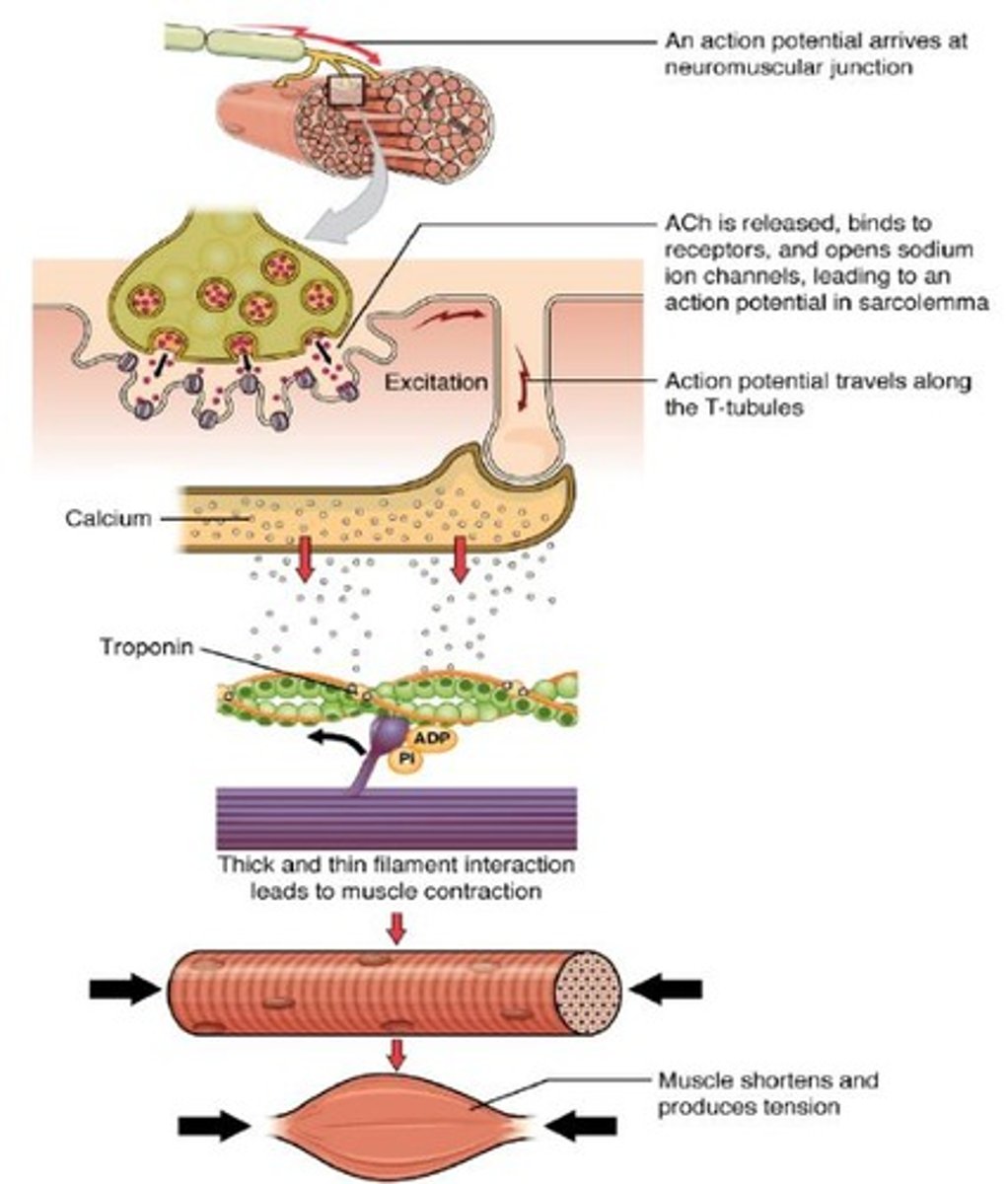
Action potential
Transmitting the action potential to the muscle causes Ca2+ ions to be released from the sarcoplasmic reticulum, initiating muscle contraction.
Sarcomere
The functional unit of muscles.
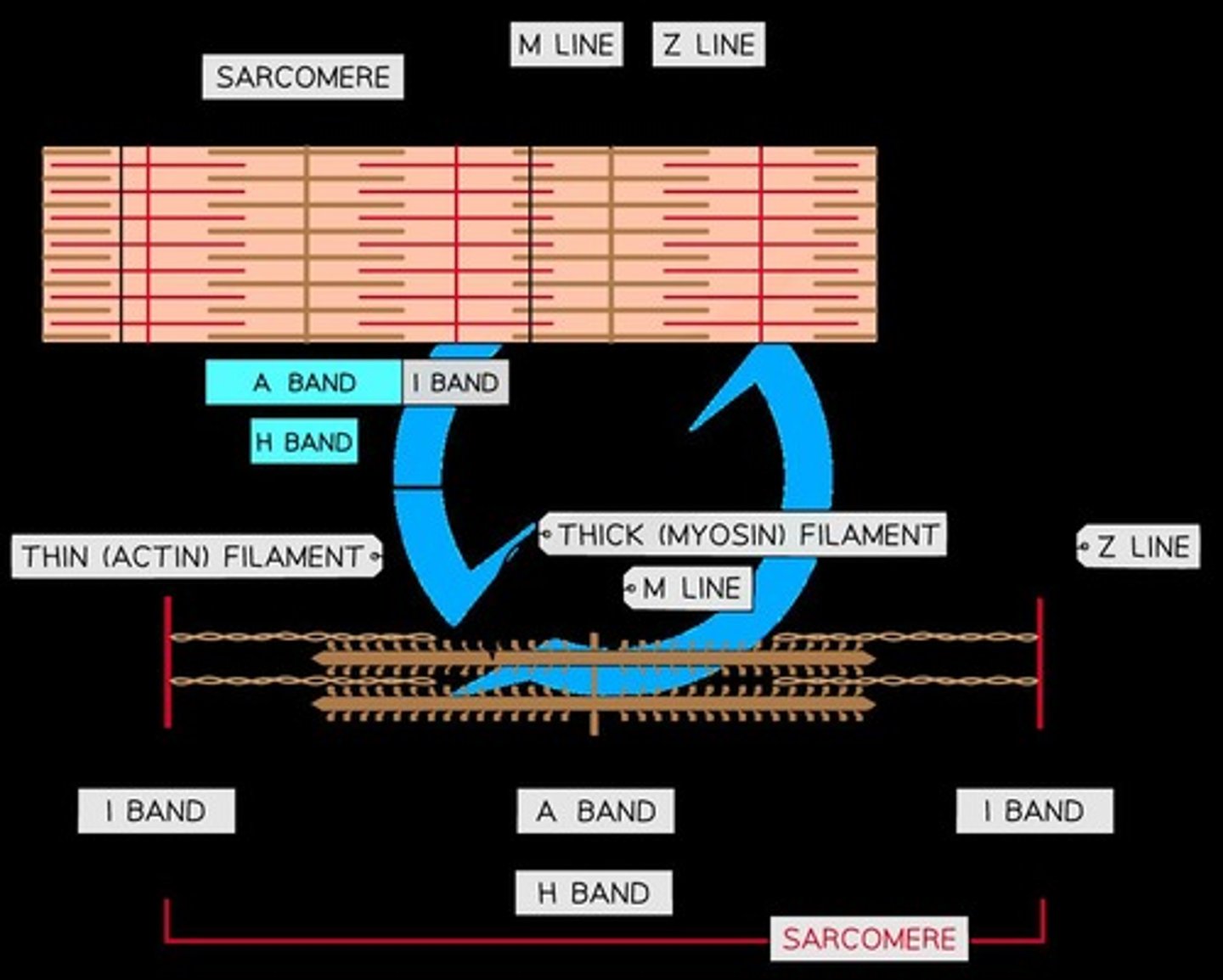
Muscle contraction
The shortening of muscle fibers, which involves the cross-bridge cycle.
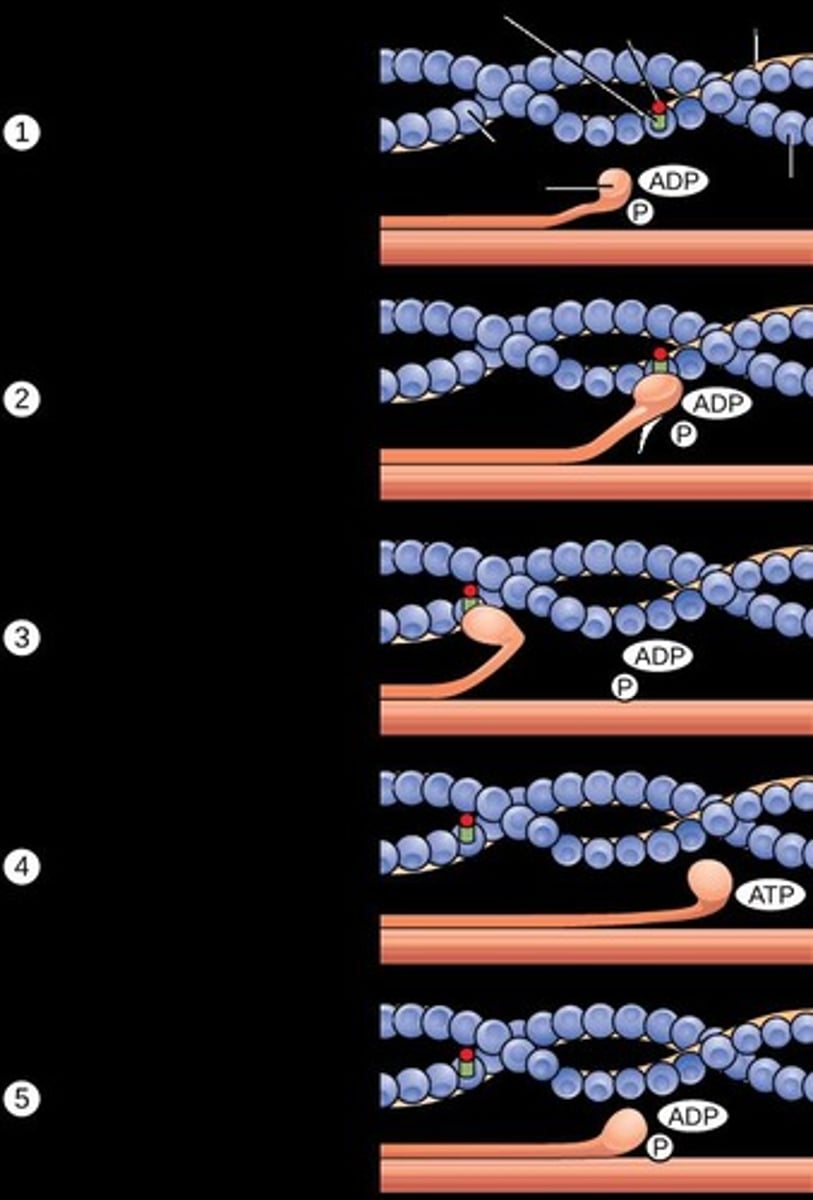
Cross-bridge cycle
The process involving the binding of myosin to actin, leading to muscle contraction.
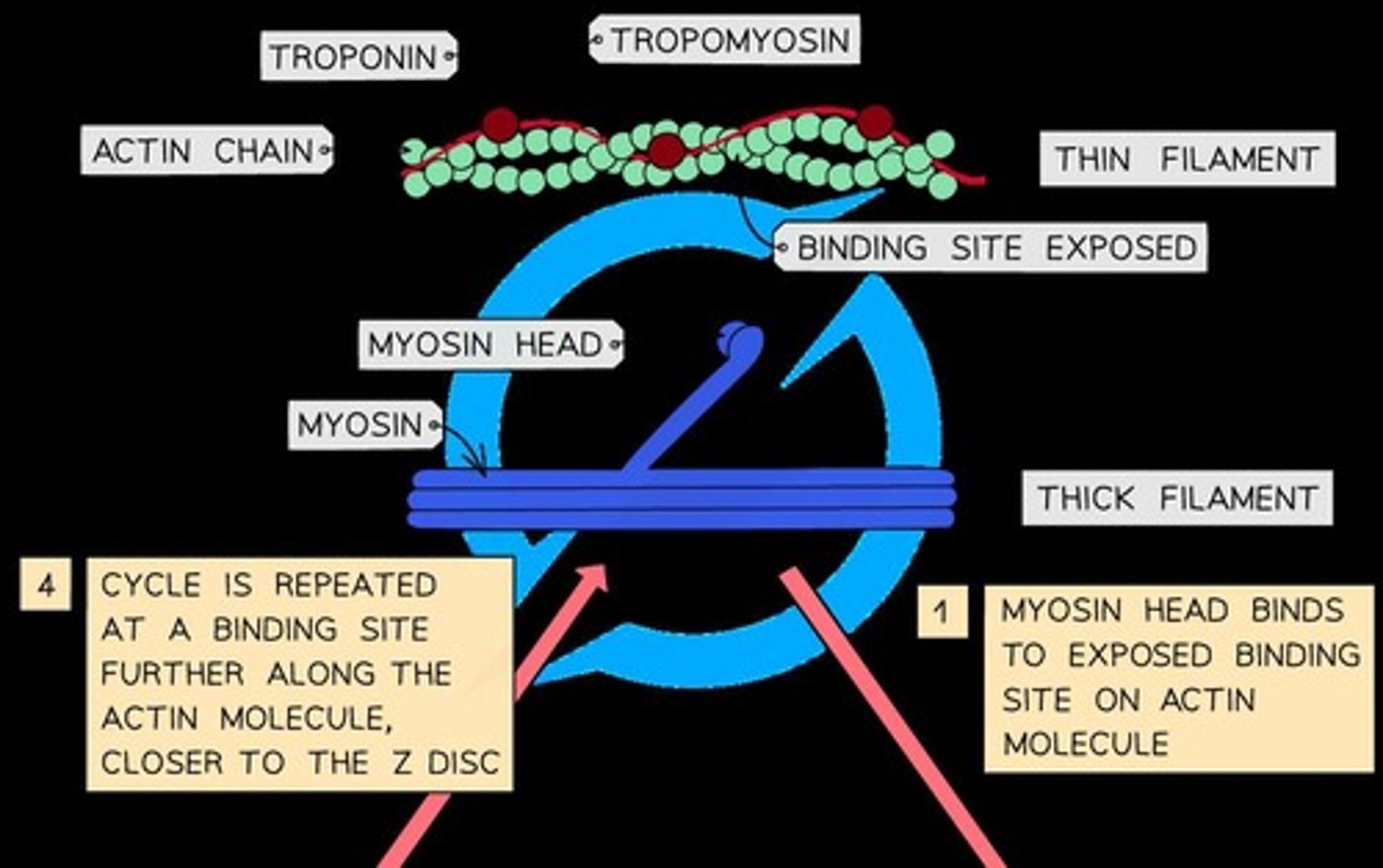
Ca2+ ions
Calcium ions that bind to troponin to change the conformation of tropomyosin, exposing myosin binding-sites on actin filaments.
ATP hydrolysis
The process that produces ADP + Pi and releases energy for myosin to move into a high energy state.
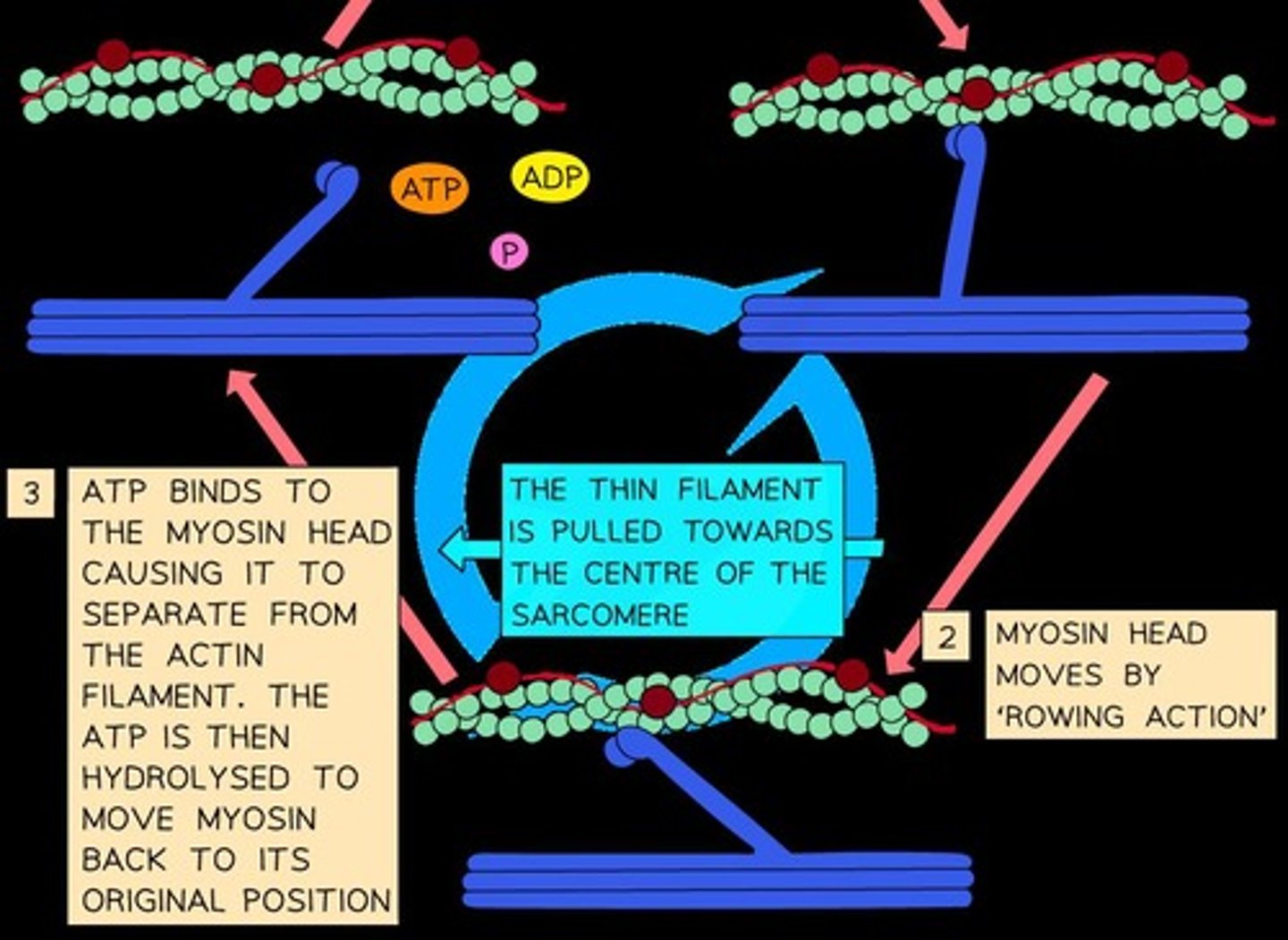
Power stroke
The action where the myosin head bends, sliding the actin towards the H-zone.
Antagonistic muscles
Muscles that work in pairs, where one muscle contracts while the other relaxes.
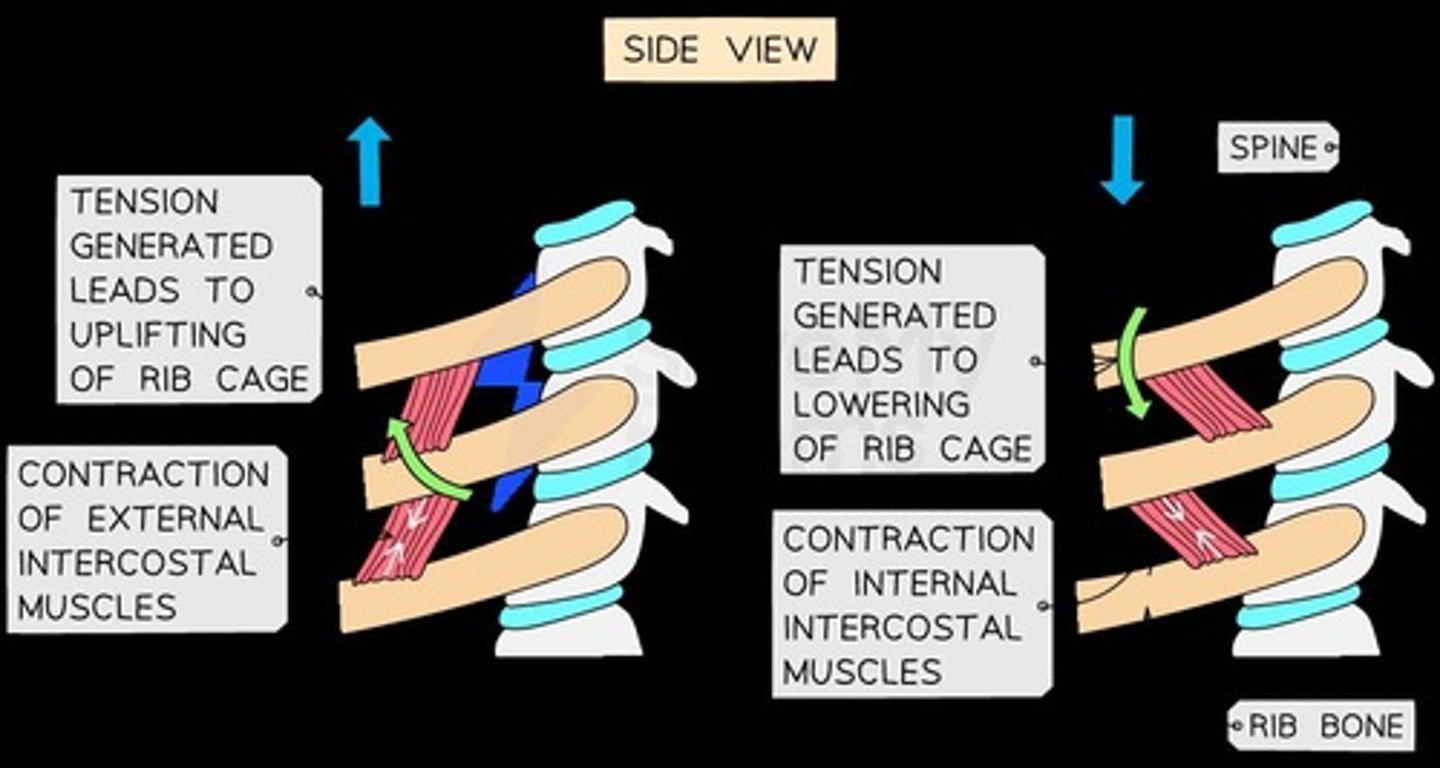
Titin
connects myosin filaments with the Z-line, stores potential energy, and prevents overstretching of the sarcomere.
Exoskeleton
The external skeleton found in arthropods, such as spiders and crabs.
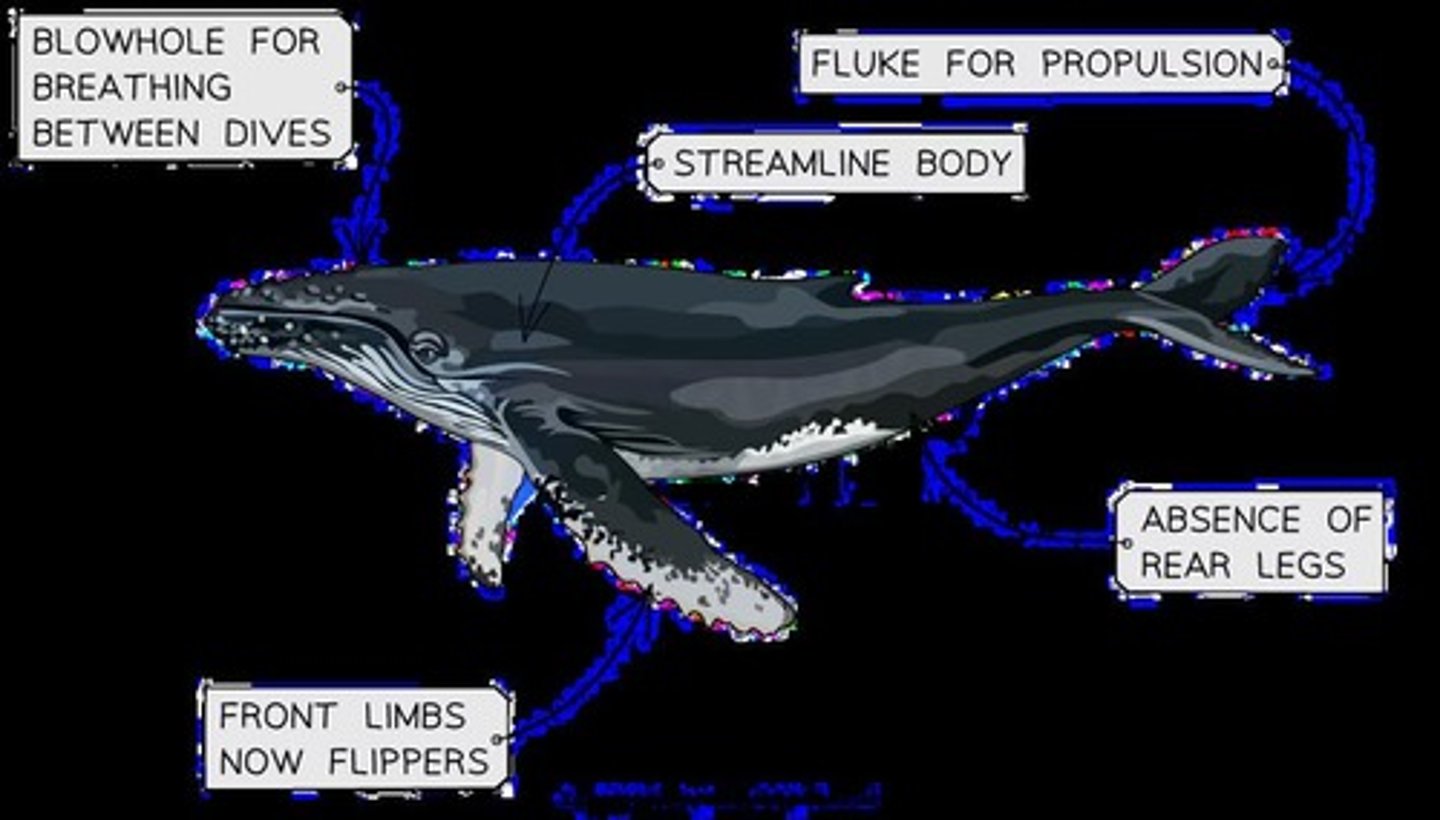
Endoskeleton
The internal skeleton found in vertebrates.
Synovial fluid
The fluid found in synovial joints that lubricates and nourishes the cartilage.
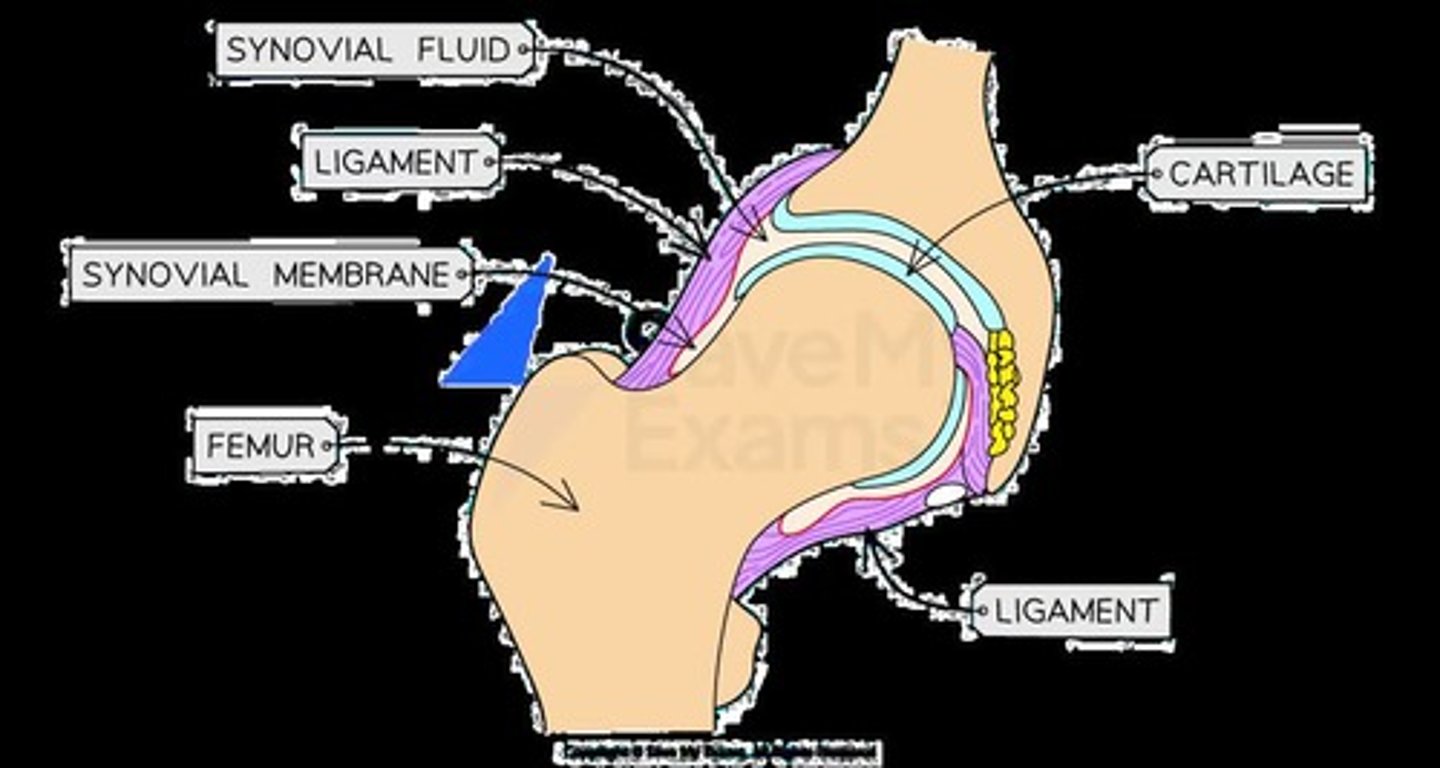
Cartilage
The flexible tissue that covers the ends of bones at joints, providing cushioning.
Ligaments
Tissues that connect bones to other bones at joints.
Tendons
Tissues that connect muscles to bones.
Range of motion
The extent of movement possible at a joint, determined by the type of joint.
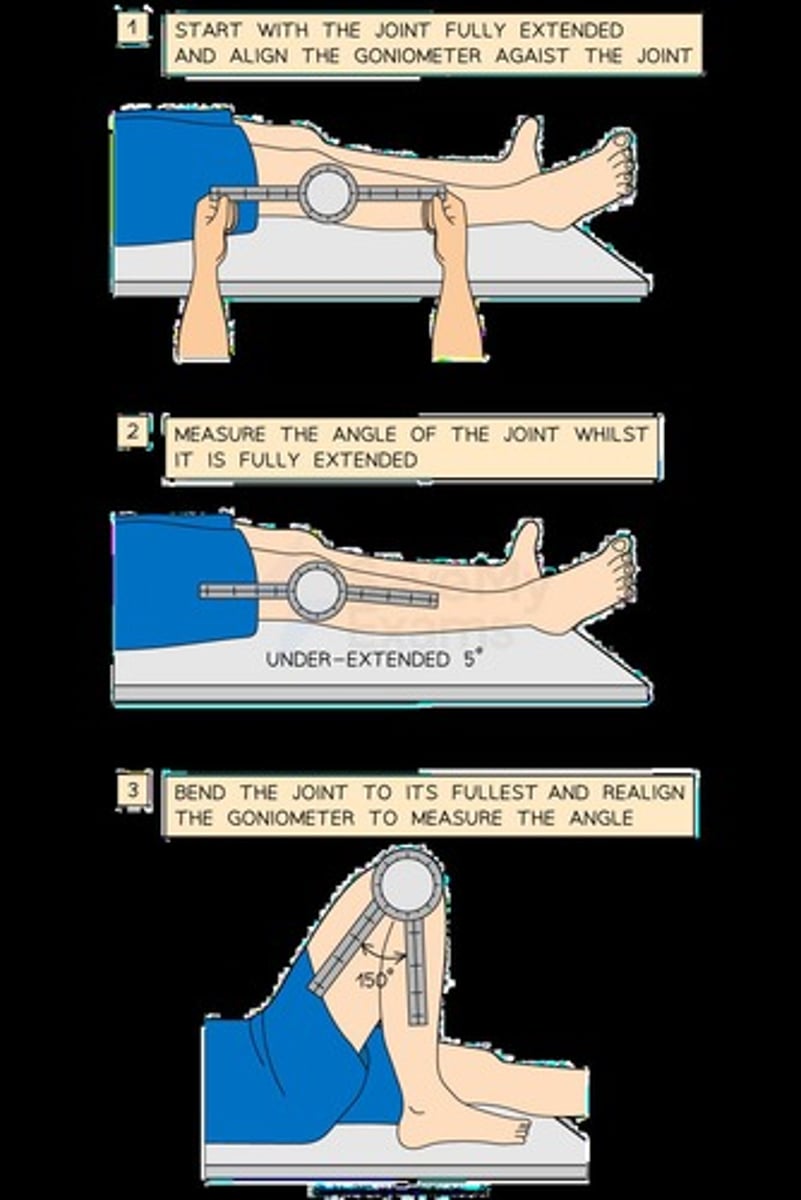
ball-and-socket joint
A type of joint that allows movement in multiple directions, such as the hip joint.
Internal intercostal muscles
contract while external intercostals relax, moving the ribcage inwards and downwards.
External intercostal muscles
contract while internal intercostals relax, moving the ribcage outwards and upwards.
Acetylcholine
functions in muscle contraction.
Sliding filament theory
describes the process of muscle contraction at the molecular level.
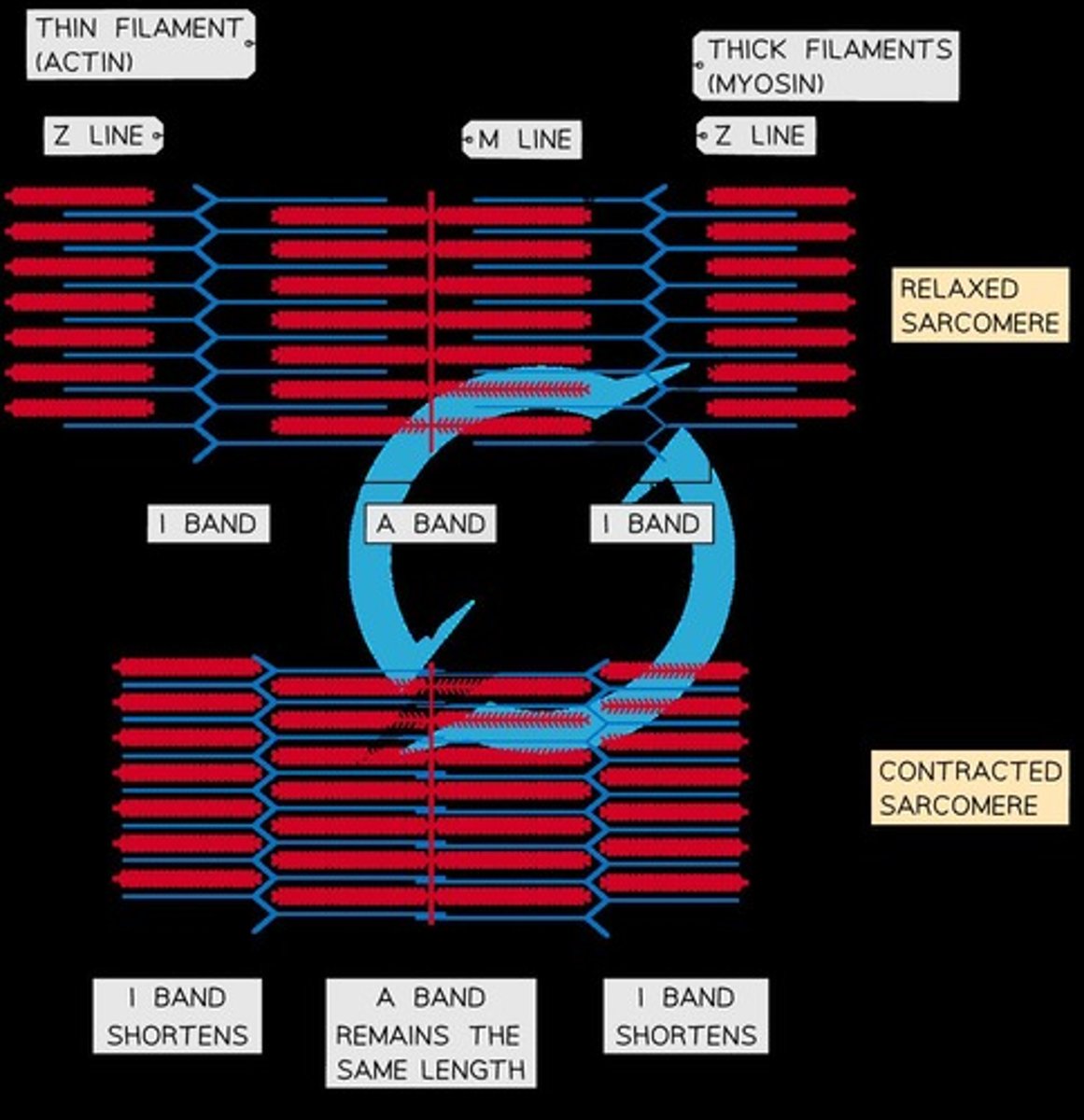
Motor units
composed of a motor neuron and the muscle fibers it innervates.
ATP
provides the energy necessary for muscle contraction.
Evolutionary advantages of locomotion
include improved access to resources and escape from predators.
Adaptations of marine animals for swimming
include streamlined bodies and specialized fins.
Function of the musculoskeletal system
moves, supports, and protects the human body.
Peristalsis
the movement of internal parts of the body in response to stimuli, such as in the digestive system.
Skeletal Muscles
Muscles in the body that are attached to the skeleton and aid movement
Striated Muscle
Skeletal muscle
Muscle Fibres
Striated muscle cells are bundled up into fibres, which are highly specialised cell-like units.
Contractile Proteins
Each muscle fibre contains an organised arrangement of contractile proteins in the cytoplasm.
Sarcoplasmic Reticulum (SR)
The specialised endoplasmic reticulum that stores calcium and conveys signals to all parts of the fibre at once.
Sarcoplasm
The specialised cytoplasm called the sarcoplasm contains mitochondria and myofibrils.
Mitochondria
The mitochondria carry out aerobic respiration to generate the ATP required for muscle contraction.
Myofibrils
bundles of actin and myosin filaments, which slide past each other during muscle contraction.
Thick Filaments
made of myosin.
Thin Filaments
made of actin.
H Band
contains only thick myosin filaments.
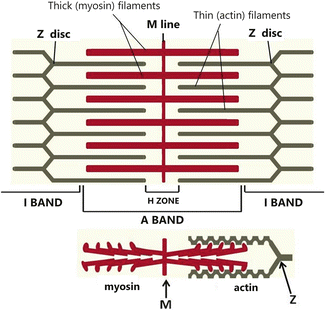
I Band
contains only thin actin filaments.
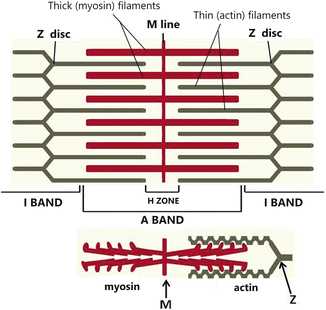
A Band
contains areas where only myosin filaments are present and areas where myosin and actin filaments overlap.
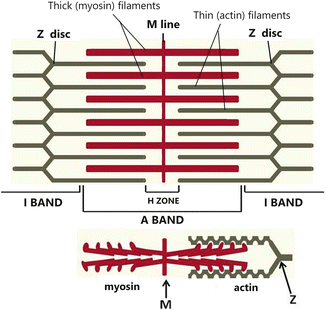
M Line
serves as an attachment for myosin filaments.
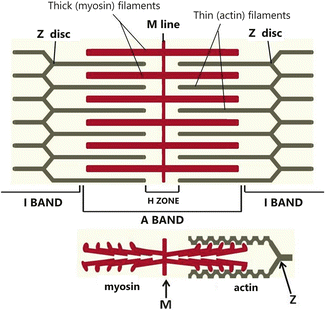
Z line
Attachment for actin filaments
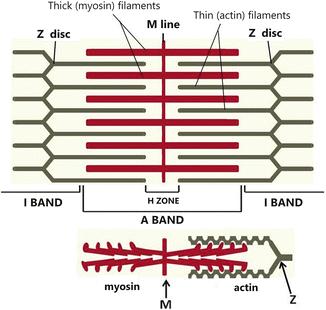
Sliding Filament Model
The thick filaments within a myofibril are made up of myosin molecules
Myosin
Fibrous protein molecules with a globular head
Actin
Globular protein molecules that link together to form a chain
Tropomyosin
A fibrous protein twisted around two actin chains
Troponin
A protein attached to the actin chains at regular intervals
Cross-bridges
Formed by myosin heads binding with sites on the actin filaments during muscle contraction
Isometric contraction
A muscle contraction without motion, maintaining posture by both muscles contracting at joints
Spring-like properties of titin
The many folds in the titin molecule that aid muscle contraction
Chemical energy storage in titin
Titin stores chemical energy within its structure when stretched
Overstretching prevention
The presence of titin prevents overstretching of the muscle
Energy release from titin
During muscle contraction, titin proteins recoil, releasing stored chemical energy
Sarcomere shortening
Occurs during muscle contraction as Z lines are pulled closer together
Muscle relaxation
The process where the sarcomere lengthens and titin is stretched out
Skeletal Muscle
contracts when it receives an impulse from a motor neurone via the neuromuscular junction.
Motor Unit Activation
During a low intensity muscle contraction, a low number of motor units are activated; for a high intensity contraction, more motor units receive impulses.
Chitin
Exoskeletons are made of polysaccharides called .
Skeleton as Levers
The presence of pivot points means that skeletons act as levers transferring the size and direction of force.
Synovial joints
The most common type of joint characterized by a joint cavity filled with lubricating synovial fluid which reduces friction.
Flexion
A movement that decreases the angle between two body parts.
Extension
A movement that increases the angle between two body parts.
Rotation
A movement around an axis.
Abduction
The movement of a limb away from the body.
Adduction
The movement of a limb towards the body.
Knee joint
A hinge joint that allows flexion and extension.
Elbow joint
A hinge joint that allows flexion and extension.
Hip joint
A ball and socket synovial joint that allows flexion, extension, rotation, sideways and backwards movement.
Shoulder joint
A joint that allows abduction, adduction, flexion, and extension.
Articulation
The connection between the bones of the femur (the ball) and the pelvis (the socket) in the hip joint.
Effectors
Muscles that are stimulated by nerve impulses from motor neurones to bring about movement.
Inhalation
The process where the external intercostal muscles contract to pull the ribs up and out, increasing the volume of the chest cavity.
Exhalation
The process where the external intercostal muscles relax, allowing the ribs to drop down and in, decreasing the volume of the chest cavity.
Diaphragm
A muscle that also relaxes and contracts during ventilation, but is not part of an antagonistic muscle pair.
Goniometer
A simple tool that measures the distance and direction that a joint can move in degrees.
Potential Energy in Muscles
The stretching of internal intercostal muscles results in stored potential energy within the titin protein of the sarcomere.
Intercostal Muscles
Muscles that work antagonistically to facilitate breathing.
Rib Cage Movement
The movement of the rib cage in opposite directions is due to the contraction and relaxation of intercostal muscles.
Locomotion
The movement or the ability to move from one place to another.
Flippers
Adapted front limbs of marine mammals used mainly for steering.
Fluke
The adapted tail of marine mammals capable of up and down movement used for propulsion.
Blowhole
An evolutionary adaptation in marine mammals allowing periodic breathing between dives, which can be sealed to prevent water entry.